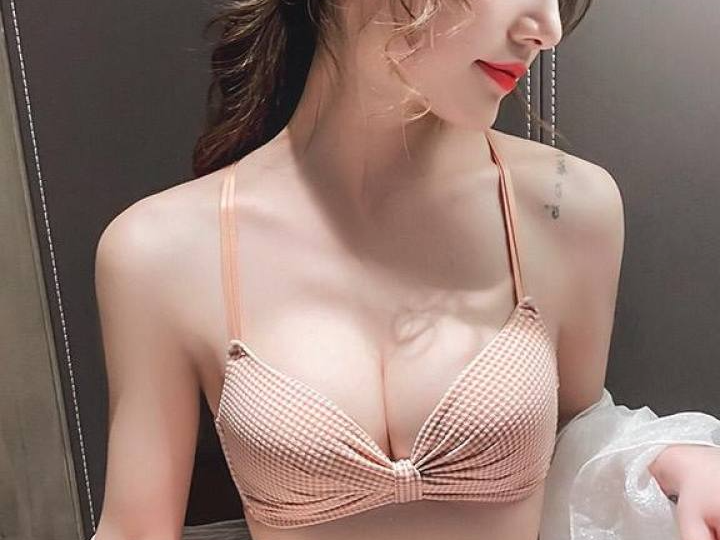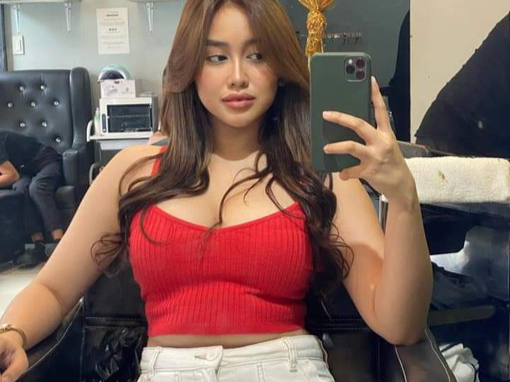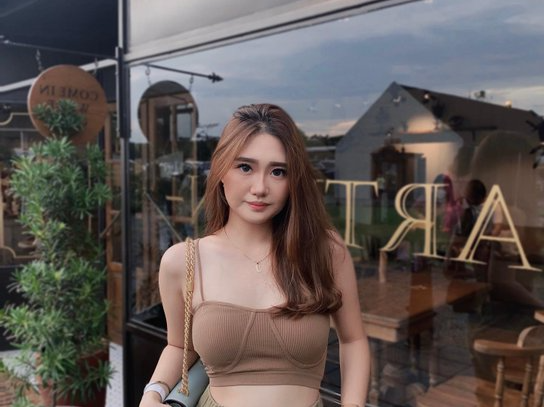‘The Little Mermaid’ Remake is Right on Race…but Still Not Quite Right for Me
Representation matters, and so I’m paying close attention to Halle Bailey’s turn as Ariel, aka, the little mermaid, in the upcoming remake of the classic Disney film. Since they released a teaser last week, my attention has been particularly celebratory, besotted, motherly: the TikTok videos of young brown girls beaming with astonished, unfiltered joy as they realize that this Ariel is brown/Black, like them, are revelatory and gorgeous.
ut it’s not all roses. For one thing, I’ve taken some very deep breaths after seeing the asinine outcry from people who cannot handle the idea of a Black little mermaid. Black Twitter has served up trenchant, pithy, and hilarious responses to the nonsense, and I have just two things to add: (1) This is nothing new — we see the same complaints when Black characters appear in Lord of the Rings, Game of Thrones, Star Wars, Thor, Titans, Superman, The Witcher, and more; and (2) the reason this is nothing new is because attempts by white people to define what can, cannot, or must be “white” are deeply and inextricably rooted in the racism and white dominance that underwrites our culture and country; like, that right there — the insistence that whiteness is a thing from which some people must be excluded and in which other people must be wrapped and protected at all costs — is literally the mental and moral fallacy at the heart of white-dominance. Just sayin.
I’m also bracing myself for the damage The Little Mermaid remake may yet do to my daughter even as she gets (and I get!) something intangible and intensely good from seeing the new, Black Ariel.
I was 8 or 9 when my mother let me see the original Little Mermaid, my first Disney movie. It was playing in the small, stucco building of the local movie theater, and I was enthralled, my fingertips oiled with fake popcorn butter, the thick red swoop of Ariel’s floating hair and the dark underside of her bangs, the pale, impossible angles of her thin waist, the massiveness of her eyes and tininess of her chin capturing my imagination.
Within the strokes of the animator’s pen was a potent definition of beauty and a clear message about the trajectory of female lives: girls give up who they are born as in order to fulfill their destiny, which, of course, is to secure male desire and get married. To put a finer point on it: girls literally alter their physical nature (mermaid to human, tail to legs) and shrivel their vocal cords (the mute damsel) to fulfill their destiny — marriage. It was the body project intersecting explicitly with the marriage plot. (You could argue that the story portrays a young woman taking action to pursue her dream, but that doesn’t get you very far: her dream is to be physically transformed, to have a different and “better” body.)
Funny — or maybe painful — how the metaphor of Ariel’s body transformation cleaved itself to my actual life. I have endured countless diets and punitive exercise sessions trying to shape my body into the kind of body I thought boys, and later men, wanted. This diet-and-exercise madness began when I was 4 or 5 — before I saw The Little Mermaid — because my family thought I was “too chubby.” So I can’t pin my entire experience on Disney
https://vk.com/@tgoodwin-2-2022-1080p
https://vk.com/@hortensejo-2-2022
https://vk.com/@aylingottli-2-honest-candidate-2-2022
https://vk.com/@mirugk06pux-fantasy-world-2022
https://vk.com/@serenaro-fantasyworld-tw-hd
https://vk.com/@lesleyro-2022-hd-1080p-tw
https://vk.com/@meymiehalv-steel-will-2022
https://vk.com/@angelhaye-2022-hd-1080p-tw
https://vk.com/@kiadrahan-2022-1080p
https://issuetracker.google.com/issues/250576681
https://issuetracker.google.com/issues/250577982
https://issuetracker.google.com/issues/250577927
https://issuetracker.google.com/issues/250580213
https://issuetracker.google.com/issues/250580109
https://issuetracker.google.com/issues/250582964
https://issuetracker.google.com/issues/250584267
https://issuetracker.google.com/issues/250584962
https://issuetracker.google.com/issues/250584270
https://issuetracker.google.com/issues/250592823
https://issuetracker.google.com/issues/250592825
https://issuetracker.google.com/issues/250592826
https://mymediads.com/articles/156170?new_advert=true
https://dotnetfiddle.net/xbzVZU
https://www.onfeetnation.com/photo/albums/rurtuitrty
https://paste.cutelyst.org/-z_G0aJ8Q
https://backlinktool.io/p/qagAJOCdojaZPEr6yX7J.html
http://phillipsservices.net/UserProfile/tabid/43/userId/172111/Default.aspx
http://healingxchange.ning.com/photo/albums/yuolyuoyuo
https://www.pastery.net/qpevtp/
https://party.biz/blogs/94793/170221/in-the-past-four-decades-the-islamic-republic-has-notoriously
http://allabouturanch.com/photo/albums/fdgphgrtyraazlhj
https://stockhouse.com/blogs/ut-i-wish-they%e2%80%99d-really-seized-the-moment-over-at-disney
https://telegra.ph/ryheryery-10-03
https://ide.geeksforgeeks.org/4ef75c93-6fe2-49cf-905d-d004116b1d06
https://lilycarlile02.diary.ru/
http://foxsheets.statfoxsports.com/UserProfile/tabid/57/userId/106486/Default.aspx
https://paste.feed-the-beast.com/view/aaad7468
https://pastelink.net/ttq7ofrb
https://webhitlist.com/photo/albums/rtuirtuirt
https://paste.toolforge.org/view/156dc1a6
https://leyes.co/user/4386.htm
http://pastebin.falz.net/2427084
https://peacepink.ning.com/photo/fdgr5d5vqaegmdg
https://caribbeanfever.com/photo/albums/ujrtujhrtujr
https://jsfiddle.net/koabm4ec/1/
https://muckrack.com/jessiemarvin-jessie/bio
http://zacriley.ning.com/photo/albums/trurturtyurg
https://dev.bukkit.org/paste/060d8fbc
https://stockhouse.com/blogs/the-problem-with-the-little-mermaid
https://tech.io/snippet/8H0gAaa
https://beterhbo.ning.com/photo/albums/rturturtu
https://paste.artemix.org/-/nkyA8n
https://paste.firnsy.com/paste/Warbc6JpXhz
https://dotnetfiddle.net/xbzVZU.
But seeing The Little Mermaid was consequential because it presented the quest for a different body in childish terms, in the slinky, seductive grammar of fairy tales, in a language I spoke and understood as my own. It presented beauty and ugliness as a binary that interlocked with goodness and evil, desirability and repugnance — consider Ariel’s opposite, Ursula, whose body is protuberantly fat and therefore reads in this particular culture as odious, out of control, and vile, just like her unpleasant personality. (Interesting sidenote: turns out you can predict whether a Disney character is a princess or a villain based solely on their waist-to-hip ratio.)
I could not, at age 4 or 5 or 8 or 9 (when I saw The Little Mermaid), see my body as sexual; but I understood that something about my body was a site for (cis-het male) desire, or lack of desire. Beauty and ugliness mattered; I was trapped in the binary, and the binary was encoded on every female body, including very young female bodies, that I encountered in tv, movies, books, music videos, and magazines, and often in real life. I understood even then that when my sister pressed sparkling shadow onto her eyelids or my mom scooped SlimFast powder into the blender, it had something to do with ugliness vs. beauty, and also with male desire — needing it, its absence suggesting a hopeless present and a hopeless future, too. As sociologist Heather Laine Talley writes, “Girls dream of being beautiful — but perhaps equally important, girls fear being ugly. While the intense desire to be beautiful certainly generates insidious consequences, anxieties around ugliness can be taxing too…fearing ugliness is, at core, a fear about the future — as if a good life is exclusively determined by what we look like [emphasis added].” The Little Mermaid rhymed with, and compounded, the messages I’d already absorbed from the culture, then wrapped it all in a pretty, child-sized pill.
I want my child — a little brown girl — to see her racial identity(s) reflected positively in the media. I also want to spare her from awareness of the male gaze, and awareness that her “beauty” and its ability (or lack of ability) to elicit male desire are still considered paramount in this culture, for as long as I possibly can. As a mother, I consider this a core job responsibility.
The problem with The Little Mermaid, no matter who plays Ariel, is that it makes my job harder, not easier. Unless they’ve rewritten the story, this new version, wonderful though it is to see Halle as Ariel, is still propaganda. It is still pushing the message that beauty and ugliness are two ends of a spectrum that can and should shape your life, that reveal your value and character. It is still pushing the message that marriage is the ne plus ultra of female ambition. It is still pushing the message that girls should sacrifice their nature — their bodies and their voices! — in pursuit of their dreams. I cannot think of a more insidious and degrading lesson to teach girls, or boys, or anyone, about the relationship between who we are and what we want, between what we look like and the lives we’ll lead.
Yes, my job as a mother is also to roll with the cultural punches, to find teachable moments, to help my child develop cultural literacy, to deal with it. I get it. I don’t demand that all media and art conform to my personal and political standards, and I don’t expect a world in which I never have to explain anything complex to my child. In fact, we may see the movie simply to enjoy the racial equity it nods toward, and to celebrate and support Halle Bailey.
But I wish they’d really seized the moment over at Disney. I wish they, too, were committed to helping girls see much, much more than body projects and marriage when they gaze at the horizon, or in the mirror. I wish they’d found a way to make The Little Mermaid part of the world we want, not just part of the world we have.
Mahsa Amini, a 22-year-old Kurdish girl, traveled to Tehran on a family holiday. She never returned. She died in the custody of Iran’s morality police, a wing of police that enforces mandatory hijab on Iranian women. Since her death on September 16th, there has been ongoing protest across the country. Mahsa was yet another heartbreaking example that in the Islamic Republic of Iran being a woman is a crime.
Mahsa is not the first woman to lose her life simply because they are born a woman in Iran. Countless women have lost their lives Some were victims of honor killing like Mona Heidari, others, died escaping rape like Schiler Rasouli, and others, took their own lives simply because they wanted to watch a football match in the stadium and were not allowed or are jailed to be executed only because they wanted to live their lives as who they are. The list is long.
But now Iran is at a turning point in its modern history. Since the disputed presidential election in 2009 (popularly known as the green movement), Iranian society has experienced significant shocks on several fronts: the effects of systemic corruption started to show and as a result, the traditional ecosystem of the regime’s cronies started to change. Some lost their stake in the game and turned into opposition while others moved the wealth they had accumulated to Europe and/or North America. Images of their children on social media indicate that they lead lives that counteract those advocated by their parents for the rest of society. They drink, dance, wear no hejab, mingle with the opposite sex freely, and their lifestyle contradicts the Islamic Republic’s values.
At the same time, a growing number of intellectuals have become disillusioned with the reformist agenda and have come to the realization that reform is not possible or meaningful within the framework of a religious dictatorship. They are increasingly aware that the problems with the structure are fundamental, and nothing short of a complete overhaul of the system would bring about real change.
Years of mismanagement of natural resources and public funds have resulted in frequent power cuts, lack of access to safe drinking water in some parts of the country, and of course deadly air pollution. In the past few years, every household has felt the combined effects of this failure, corruption, and economic sanctions.
The unemployment rate is staggeringly high among educated women. In 2020 nearly 70% of unemployment in the educated population were women. Women occupy almost half the seats in universities. The disproportionately high unemployment rate among women points to structural and cultural discrimination barring women’s access to sustained employment opportunities.
Among the less educated segment of society, the dire economic situation has been the driving force behind more recent transformations in the demographics of employment. Jobs that were previously frowned upon for women are now more accepted as many households cannot sustain themselves on one single (usually male) income anymore. As a result, more women have taken up jobs traditionally held by men: women driving trucks or taxis became a common scene. Likewise, the number of women starting and running their home-based businesses has rapidly grown.
In today’s Iran, young women are more informed about their basic human rights. Building on the capacities of international Farsi-speaking media and with social media platforms, Iranian activists have circumvented censorship and reached almost all corners of society, spreading information and educational material, and breaking the decade-old barricade that the regime had put in place after the revolution. Women have become more aware of their rights and this time it is not only the highly educated ones.
Conversations around women’s rights have become integral to the public discourse in Iran. Campaigns like “the Iranian Me Too” have highlighted and unearthed a diversity of often unpleasant lived experiences of women and the LGBTQ community in Iran, educating men and women alike on the nature, prevalence, and consequences of sexual harassment and gender-based violence.. . Despite heavy backlash from government authorities and the conservatives men and women, the broader population is now more sensitized to women’s rights and gender diversity.
In the past four decades, the Islamic Republic has notoriously used smart tactics to deter any network-building and grassroots movements. A large portion of the country’s annual defense budget is allocated to acquiring and maintaining state-of-the-art technology to monitor and control cyberspace and brutally crack down on any opposition. Likewise, the regime has systematically discredited, imprisoned, or killed any potential or emerging opposition leader on the political scene.
However, the government will find it more difficult to contain this latest round of protests. Socioeconomic pressure has been felt by many, if not all, strata of the society and it has unintentionally served as a bonding lived experience. The shared pain and pressure coupled with the raised awareness about the utter disregard and regular violation of women’s rights at the legal and societal levels have led to a strong desire for change. When the pressure points are scattered across various communities, provinces, professionals, and all genders clamping down on opposition will prove to be more non-viable every day.
Shortly after the tragic killing of Mahsa, on Monday, September 19th, Iranian feminists called for protests in Tehran. Many men and women took to the streets in defiance of compulsory hijab laws. Women now witness the long-awaited solidarity from their fellow citizens.
Thanks to Chinese surveillance technology and high-tech CCTV cameras in every city occupying streets has become more dangerous for protestors. The police and intelligence forces can now easily identify and arrest protestors. However, people have learned from the bleak days of a brutal crackdown in the past decade when we all witnessed many innocent lives lost on the streets. Today’s protests are rather different, they demonstrate elements of partisan warfare on three different fronts: streets, social media, and households.
Even though there are no official organizers, street protest techniques are visibly more sophisticated. On social media, Iranians who oppose the regime run campaigns to draw international attention to what is going on in Iran. They have been successful in attracting support: as of September 21st, Elon Musk and Anonymous have voiced their support.
The regime can, of course, violently stifle protests, ban social media or even run slick campaigns to distract the public but the opposition has now reached households. It is now ever more challenging to counteract what social, political, and women’s rights activists have done to educate the general public. Every move the government makes to close down on public demands will bring more fuel to the fire.
Iran’s first and second revolutions were led by men but the third will be led by women which I believe means we are in for a better future. Iranian women are innately compassionate, and years of oppression have taught them to be inclusive. They care about child marriage, as many of them have either been or are closely related to one. They believe in the rights of others because they have experienced how it feels when you take someone’s most basic rights away. And, women seem to have the magic dust of unifying Iran -from every ethnic background and every religious or non-religious group: Arab, Balouch, Turk, Fars, Lor, Kurd, Sunni, Jews, Baha’i, Zorastrian, Armenian, and much more. They are Iran.
The proof is in Mahsa’s case: She is from the Kurdish minority — an ethnic group that has been systematically oppressed for the past four decades, endlessly fighting for its rights, and always dismissed or silenced by the regimes and its supporters. These days, people all over Iran are chanting in support of Kurds. Many, inside and outside Iran, are reverberating a powerful-and universal-demand chanted by the protestors: “Woman, life, freedom”.
The female revolution might not happen today or tomorrow. It might not even materialize in the next decade. Who knows how revolutions work… But there is one thing we know: You can only resist change for so long. When women collectively fight for their rights and teach their children to do the same, change becomes inevitable. A look at Iran’s protests and social media bears witness to that and confirms we are on the right path. The next generation is already out there demanding its rights — loud and clear.









